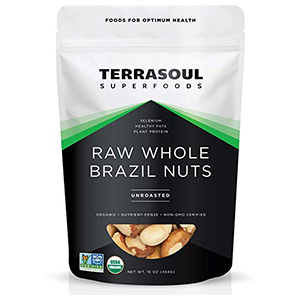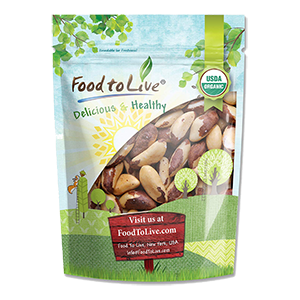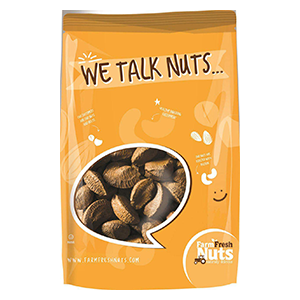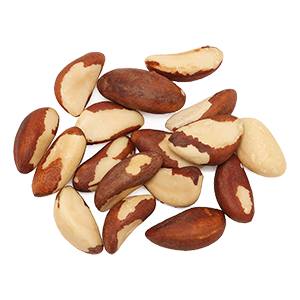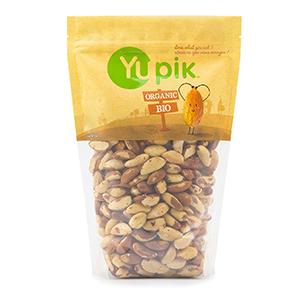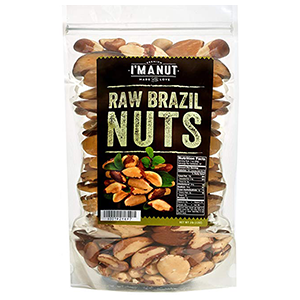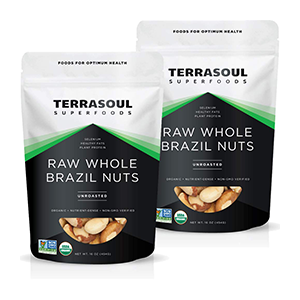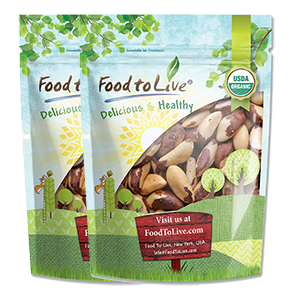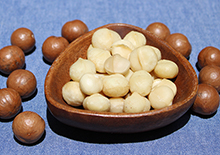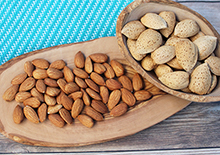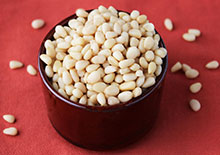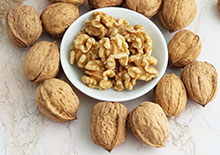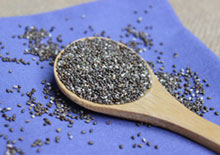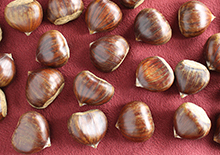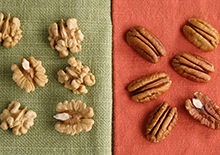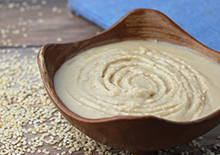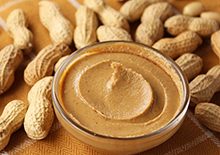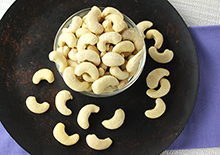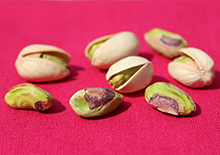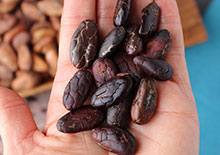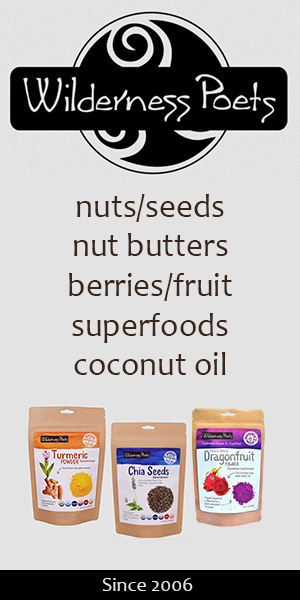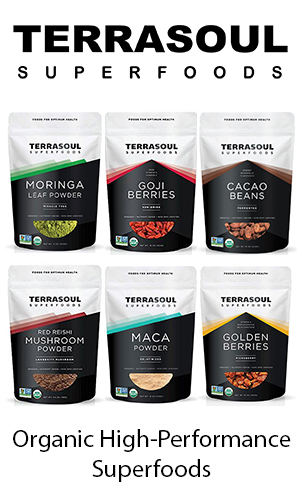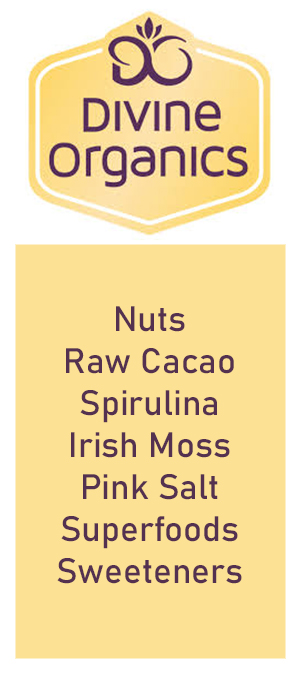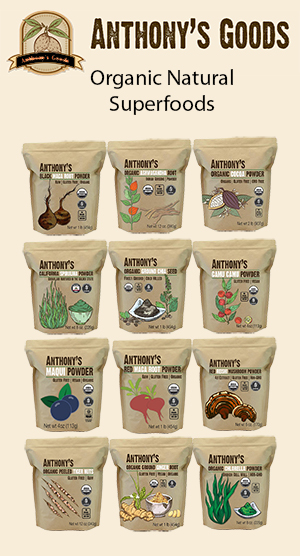- Home
- Nuts and Seeds
- Brazil Nuts
Unique Facts About Brazil Nuts and Selenium Content
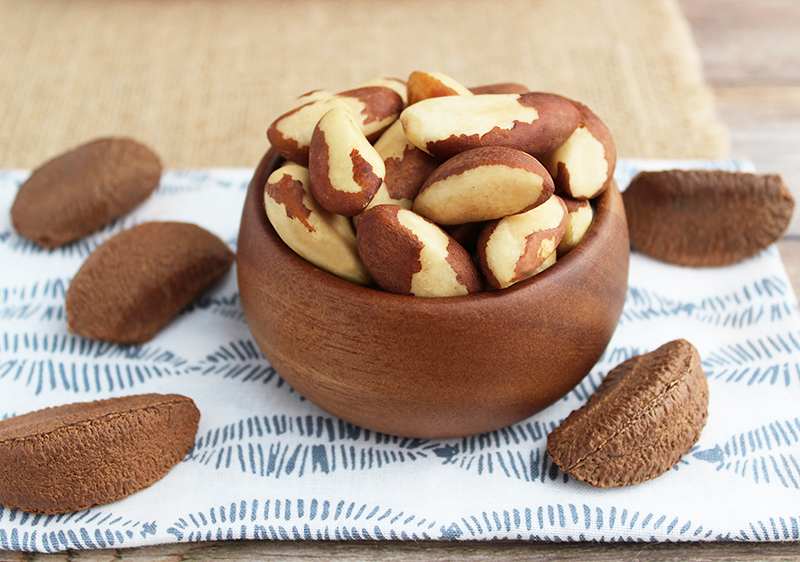
Brazil nuts come from the tree species Bertholletia excelsa, one of the tallest and longest-living canopy trees common to the Amazonian rainforests of Brazil, Peru, Bolivia, Columbia, and Venezuela.
Living close to 500 years or more, these trees have been utilized by humans for over 11,000 years, since the Upper Paleolithic Era.
Growing as high as 160 feet (50 meters), the top portion of the tree is where most of its foliage is located. This is also where the large and heavy fruit pod capsules, weighing close to 4 pounds each, grow and naturally fall to the ground when ripe. This can be a dangerous event when walking around in the jungle because of their weight and the speed at which they fall from these very tall trees.
When cracked open, about 8-24 brown-shelled triangular-shaped Brazil nuts are packed together into orange-like sections.
Although
frequently considered a type of tree "nut", botanically speaking, they
are actually "seeds" as they technically are found within a protective
fruit covering.
What are some more interesting facts about Brazil nuts, compared to other nut and seed varieties?
Brazil Nuts are From Wild Trees, Not Crop Cultivated
Brazil nuts are one of the only commercially produced nuts that are internationally traded and sourced almost exclusively from wild stands of trees, most of which come from natural locations of the Amazon.
One of the reasons for this is because the trees depend on the intricate ecosystem of the rainforest which is home to large-bodied bees needed for flower pollination and consequent fruit pod production.
Compared to attempts at crop cultivation, wild trees are also the most economically viable because of their large output with an average tree yielding close to 250 pounds of nuts in a single year.
Wild Brazil nut trees are therefore a highly valued commodity and cutting them down is actually illegal in countries like Brazil (*), Bolivia, and Peru, which are the top three producers of Brazil nuts grown on managed forest stands.
The fruit capsules, about 4-6 inches (10-15 cm) in diameter, are gathered after they fall to the ground and the unshelled nuts are extracted on-site by local harvester’s called "castañeros", then packed into large sacks and transported to nearby production facilities.
As a valuable resource for local communities, the Brazil nut tree has long been used as a sustainable income-generating model for the preservation of the natural wild Amazonian landscapes. It is often, in fact, referenced that eating Brazil nuts helps to save the Amazon rainforest from destruction.
Some organizations, like Peru's Amazonian Conservation Association and their "Conserving Brazil Nut Forests" program, have supported working family-based communities, who sell their harvests to shelling factories for export. (*)
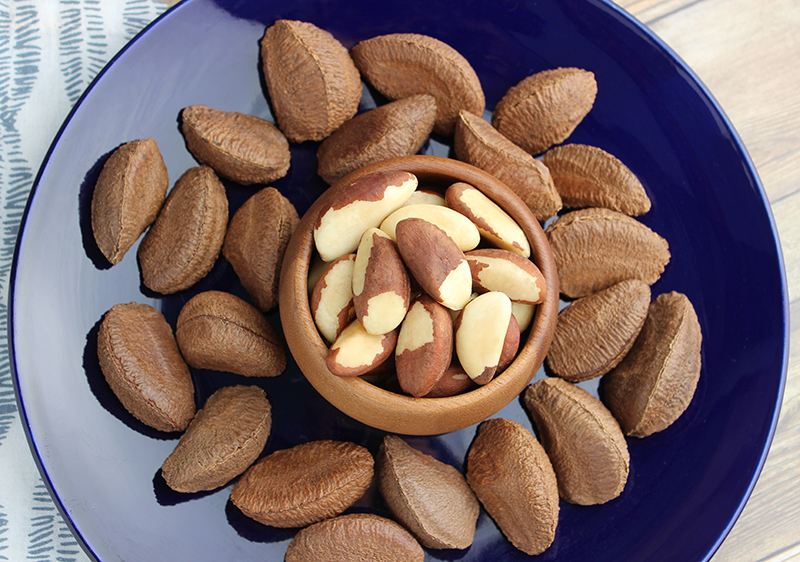
Brazil Nut Nutrition as a Source of Selenium
One of the most nutritionally unique facts about Brazil nuts is that they are one of the highest known dietary sources of the mineral selenium (Se), more than any plant-based, animal or seafood-derived food.
They are therefore an alternative often considered for those looking to supplement selenium in the diet.
Selenium acts as an antioxidant in the body and supports glutathione production and DNA synthesis. Inadequate nutritional supplementation of selenium can cause a number of health disorders related to thyroid function as it helps catalyze the conversion of the thyroid hormone T4 (thyroxine) to the active T3 (triiodothyronine) hormone.
Often, 1-2 Brazil nuts are believed to offer the daily recommended intake for the selenium micronutrient.
The RDI Recommended Daily Intake for selenium is 55 mcg per day for adults consuming a 2,000-calorie daily diet. During pregnancy, this amount for women is 60 mcg a day and 70 mcg a day when lactating. (Source)
According to nutrition data, one large nut (5 grams) contains 95.9 mcg or 137% the Daily Value, based on an adult 2,000 calorie diet.
In some research on testing the effects of brazil nut-derived selenium supplementation on 40 patients with Se deficiency and low T3 levels, it was shown that while one Brazil nut consumed once a day for a 3-month period improved thyroid hormone levels, it didn't not restore T3 to normal levels.
In conclusions from a smaller trial on older adults, preliminary evidence showed that one Brazil nut consumed over a 6-month period was able to restore selenium levels compared to a control group.
Although Brazil nuts have been shown to be a good source of selenium, there is some mixed evidence whether other factors may affect selenium amounts as well as complete uptake.
If you're looking to increase selenium content via Brazil nut intake, there are two things you may want to consider.
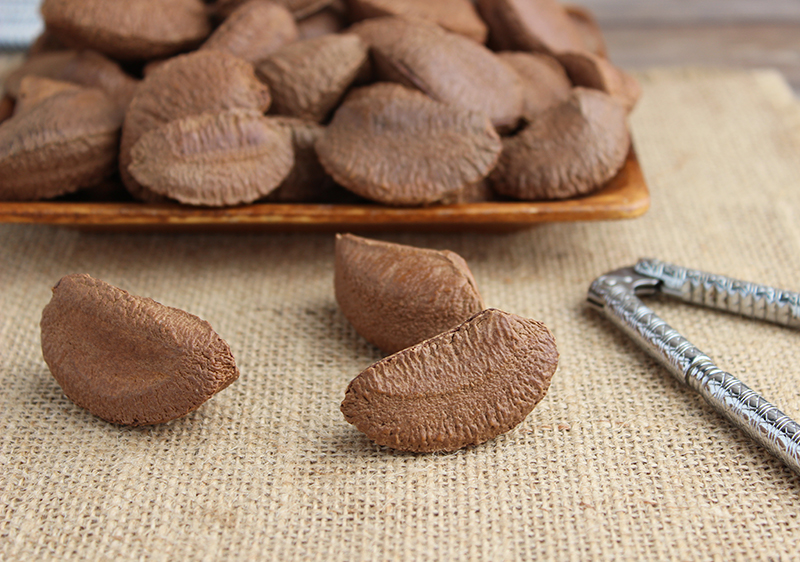
Two Things to Consider About Brazil Nuts
1) Too Many Brazil Nuts Can Be Toxic
There is some controversy about whether all Brazil nuts contain close to the same amount of selenium content. This is because the selenium concentration in the nuts (or technically seeds) can vary depending on the amount present in the soil in which they grow and other factors. (*)
In one 2019 published study, it was identified that some Brazil nuts may far exceed the recommended daily allowance for selenium and cause toxic effects if consumed in quantities over 1200 mcg per day. It was therefore recommended that serving size should be limited to no more than 3 nuts a day to ensure safe selenium intake.
2) Selenium in Brazil Nuts May Not Be Bioavailable
More on Nut and Seed Nutrition Data
On the other side of the nutrition spectrum, Brazil nuts are one of the highest in the "antinutrient" known as phytic acid. This substance is known to bind to minerals, like selenium, and reduce their complete absorption.
This might be especially important if you happen to be using Brazil nuts as a selenium supplement for improving thyroid function.
In some research, phytic acid was reduced by pre-treatment methods like soaking and fermentation.
The nuts can be soaked, strained and utilized to make blended nut milks or shakes, cultured with a probiotic powder to make nut cheese, or can be dehydrated for a crunchy snack-like food.
Other Nutritional Value of Brazil Nuts
Besides being high in selenium, Brazil nuts are also a source of magnesium, copper, phosphorus, and manganese as well as thiamin.
They contain healthy fats, like oleic and linoleic acids, in addition to protein, and fiber. One nut contains about 32.8 calories.
BRAZIL NUTS
One Ounce (About 8-10 Nuts)
Protein - 4.0g, 8%
Fat - 18.6g, 29%
Carbohydrates - 3.4g, 1%
Calories - 184 (770 kJ), 9%
Total Fat - 3.3g, 5%
Saturated Fat - 0.8g, 4%
Monounsaturated Fat - 1.2g
Polyunsaturated Fat - 1.0g
Total Omega-3 fatty acids - 0.9mg
Total Omega-6 fatty acids - 1028mg
Selenium - 537mcg, 767%
Magnesium - 205mg, 26%
Copper - 0.5mg, 24%
Phosphorus - 203mg, 20%
Manganese - 0.3mg, 17%
Zinc - 1.1mg, 8%
Potassium - 184mg, 5%
Calcium - 44.8mg, 4%
Iron - 0.7mg, 4%
Sodium - 0.8mg, 0%
Thiamin - 0.2mg, 12%
Vitamin E (α-Tocopherol) - 1.6mg, 8%
Folate - 6.2mcg, 2%
Riboflavin - 0.010mg, 1%
Pantothenic Acid - 0.1mg, 1%
Vitamin K - 0.0mcg, 0%
Niacin - 0.1mg, 0%
Vitamin B6 - 0.0mg, 0%
How to Use
Eat them whole as a snack food or chopped as a garnish to meals and salads.
Brazil nuts can go rancid quickly because of their high polyunsaturated fatty acids, so they are best stored in the fridge or freezer.
Precautions:
Nuts and seeds should, of course, be
avoided by those who have allergic reactions after consuming them. Consult your nutritionist or health care provider before adding Brazil nuts to your diet if you are pregnant, nursing, are taking prescribed medications, have a thyroid disorder or serious medical condition.
Shop Related Products (About Affiliates & Amazon Associate Paid Links)
Affiliate Disclaimer: This section contains affiliate product links. If you make a purchase through our recommended links, we receive a small commission at no additional cost to you. Thanks for the support.

